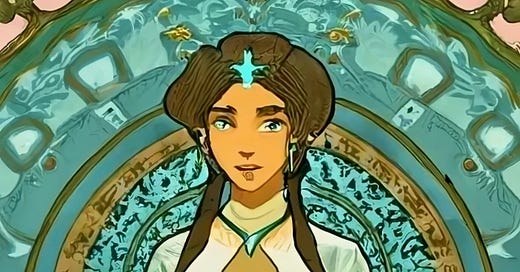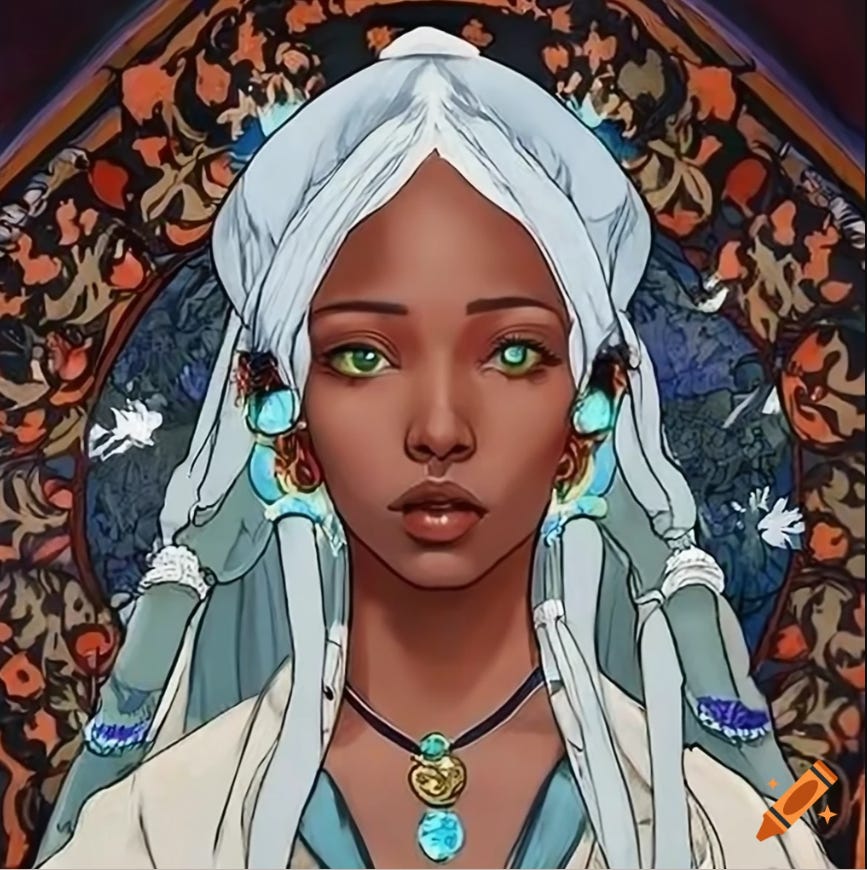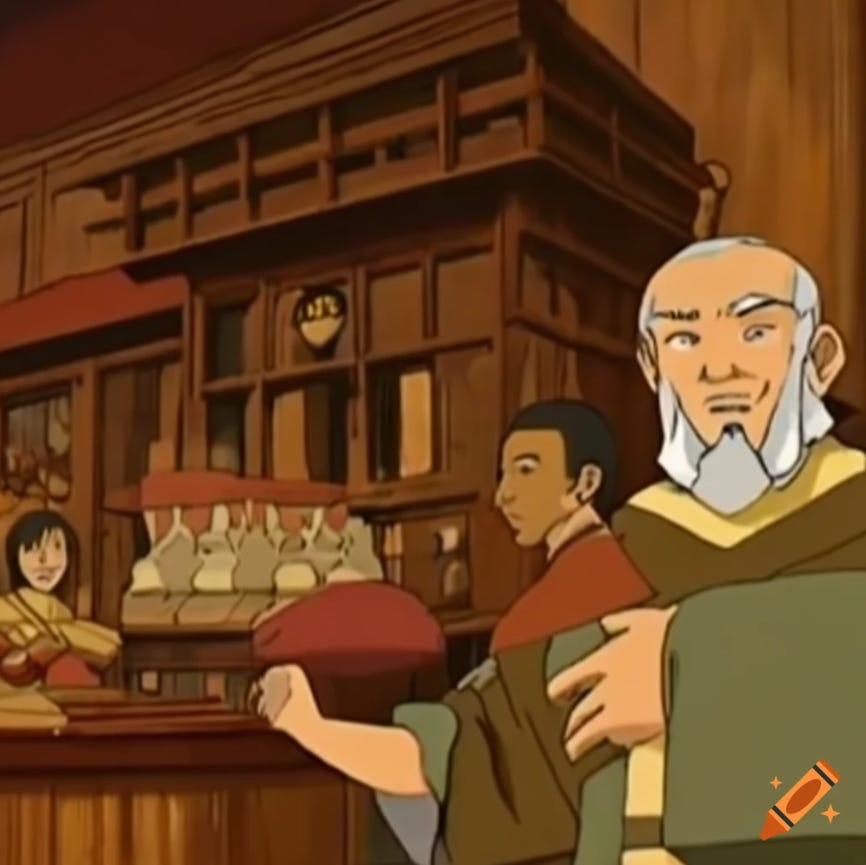Cartoons and DEI
Enjoy the AI-generated ATLA images scattered throughout!
You may know I’m a huge fan of the kids’ cartoon Avatar the Last Airbender. In fact, I just finished recording season two of a podcast called Bending Towards Justice: Avatar the Last Airbender for the Global Majority.
So I thought, while we’re all waiting for me to start school and share all the cool things I’m learning, why ATLA feels germane to my DEI work, or maybe more how it’s germane to the post-democracy into which we’re all sliding. (BTW, shout out to Scot Nakagawa’s substack if you’re interested in how to resist authoritarianism.)
The ATLA world highlights the challenges of different forms of governance. There’s a communitarian model with elders at the center of decision making (the southern water tribe) - awesome, but not scalable. There’s a highly bureaucratic model (the Earth Kingdom) - very scalable, but prone to abuses that are easily hidden in the massive infrastructure. There’s an ascetic model (the air nomads) - spiritually grounding, but with limited reach due to its monastic nature … and the fact that you have to be able to fly to get there. And there’s the realm expanding, colonizing hierarchy (the Fire Nation), which is great if you’re part of the fire nation, for the most part, and if you don’t have too many questions about the jingoism baked into the education system and beyond.
The tensions between violence and nonviolence in the midst of fighting oppression show up. The main character, Aang, is a young monk committed to nonviolence. The friends helping him fight evil come from cultures where war is not desirable but is perceived as necessary in the face of oppression. There are limits to what Aang can achieve when he avoids conflict, but avoiding conflict isn’t the same thing as avoiding violence, and this tension mounts over the course of three seasons.
It’s not horrible to immerse ourselves in a world inhabited only by people of color sometimes. The creators of ATLA were white guys who created ATLA as their love letter to anime (if you’re a fan of old school anime, you’ll recognize Appa as a straight-up tribute to the Catbus character in Miyozaki’s My Neighbor Totoro). And even so, people of color have felt so seen by this twenty-plus year-old cartoon series. I once heard actor Dante Basco, a Philipino actor who voiced Zuko in the show talk about how profound it was to be in the presence of Mako, the legendary actor who voiced his Uncle Iroh until his passing halfway through the series.
For me, there’s something powerful about navigating the questions of good and evil, of governance, of collaboration across difference, in a context where I don’t also have to factor in white supremacy. It’s a relief of a very particular type, because white supremacy is in the background of almost everything that happens in communal life, even in situations primarily involving people of color. When the show starts, the Fire Nation has only been in ascension for 100 years, meaning the nations that oppose them have not fully internalized a narrative of their superiority, even if that work has happened within the Fire Nation itself. That’s very different than the world we inhabit, and it’s an interesting thought experiment.
The thought partners I have actually deepen our reflections when we use ATLA as a tool for discussion. My friend Demitrius and I have done lots of work together addressing gentrification, but when we got together with my roommate Zeke in season one to discuss gentrification in relation to our childhoods and what was happening in the ATLA universe, I saw the show and my friends in a more profound and connective way. When my friend LaShaundra joined us, I thought we were going to discuss a fun and playful episode about how old habits die hard, and instead she helped me see how the episode was about the low grade constant trauma of being a refugee. Cayden and I just recorded an episode for season two where we ended up discussing the deep state and whether conspiracy theories actually contribute to our disinvestment in democracy. (That’s episode 11 of season two, so I can’t link to that one. Sorry!)
In the same way it can be easier to have a meaningful conversation on a hard subject when you’re driving with someone so you can talk without having to make eye contact, talking about experiences with oppression and marginalization and imposter syndrome and surviving trauma are made easier when they’re discussed through something a little removed from my friend and me. In the process I get to know them, and I also get a different lens on the justice issues I face myself.
The animals are SO CUTE. There are turtleducks and giant unagi and flying bison and badgermoles. I want to visit the wildlife sanctuary Aang creates in season two. Although I will keep my distance from the Eel hound.
OK, so when all’s said and done, it might just be that in the midst of work that doesn’t feel it will ever have a clear resolution, I want a show where good people take on an evil too big to defeat and then win. (Come on. It’s a kids’ show. What monsters would take you on a three season arc with your kids and then make them lose in the end? THAT WAS NOT A SPOILER.)
But I will say that the past year thinking about my favorite show with other people of color has made my life better, made my relationships stronger, and given me something outside of myself for my brain to chew on.
And hopefully it’s resulted in me providing a slightly higher quality of work to my clients and friends and colleagues like you.
I suspect some of my sharing in the months to come will be deeper and more complex–and maybe even involve graphs–but for now, I wanted to share a little bit about something I love, in the hopes it might bring you some joy also.
With love,
Sandhya
PS–if you’ve watched the show (or listened to the podcast), I’d love to hear from you about your big takeaways!











